Scorched earth tactics have been used nearly as long as armies have conducted military campaigns. While the practice is less common in modern times, it has seen recent use, most notably during the 2022 Russian invasion of Ukraine. Here’s its history and some of its most notable uses, including during World War II and in Vietnam.
Ancient use of scorched earth tactics
Before one can discuss the use of scorched earth policies, it must be understood what such tactics entail. In general, a scorched earth policy is a strategy which aims to destroy anything that may be of use to the enemy, whether that be natural resources, military equipment – even local citizens. While the latter was banned under the 1977 Geneva Convention, the destruction of resources remains a key strategy for some warring nations.
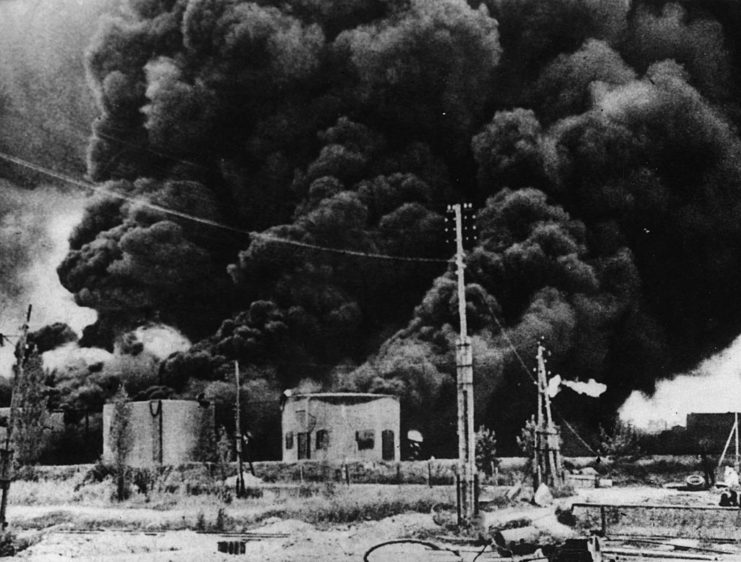
The Scythians were the first to use the scorched earth tactic. Nomadic herders from what is now Kazakhstan, Russia and Ukraine, they did battle against the Persians and Darius the Great. To gain the upper hand, they moved in secret, destroying the Persians’ food and poisoning their wells. Before their opponents could figure out what happened, they would retreat back into the forest.
Use of scorched earth tactics up until the 19th century
As society entered the medieval period, scorched earth tactics continued to grow in popularity. Viking chieftan Hastein used the policy during the Great Viking Invasion of England in 893, and its use continued with the Harrying of the North in 1069. During this, William the Conquerer quelled a rebellion in Northern England in the most brutal way imaginable. His men burnt down the majority of the villages, killed livestock and destroyed food stores.
The villagers who survived the initial attack resorted to cannibalism.
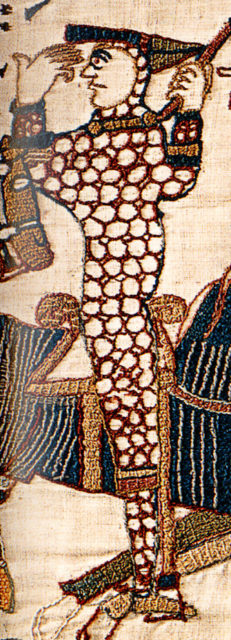
During the Hundred Years’ War, both the French and English made use of scorched earth tactics, as did Mircea the Elder against the Ottoman Empire in 1395. Prince Stephen III of Moldavia did the same during the Ottoman advance in 1475-76.
As society progressed into the early modern era, armies continued their use of the scorched earth strategy. The most famous use of it during this time was in Ireland during the Desmond Rebellions in the mid-to-late 1500s, when the majority of the province of Munster was destroyed.
This conflict was followed by others across Europe, including the Wallachian-Ottoman Wars and the Nine Years’ War.
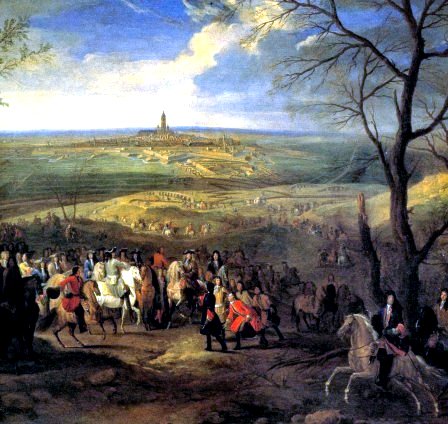
Scorched earth tactics were also used outside of Europe. In India, the Chandellas used the strategy while under attack by Mahmud of Ghazni between 1019-22. Fast forward to the 17th century, when Shivaji Maharaj, founder of the Maratha Empire, also used the strategy. He did, however, have some ground rules. His forces were expected to burn down cities, but were ordered to not rape or injure civilians, nor disrespect any religious institutes.
Mararaj’s son, Sambhaji, continued these practices, making him widely despised among the enemy Mughals. In 1689, Sambhaji was captured by Muqarrab Khan, the leader of the Mughal Army. He and his soldiers were particularly angry with the three-day assault following the Battle of Burhanpur. Sambhaji was charged with casual torture, arson, looting and massacre and subsequently put to death.
The Napoleonic Wars and the American Civil War
The two most notable instances of scorched earth tactics being used in the 19th century occurred during the Napoleonic Wars and the American Civil War. Throughout the course of the Napoleonic Wars, those countries that were invaded often resorted to a scorched earth strategy, destroying food supplies to hinder the movement and success of the invading forces.
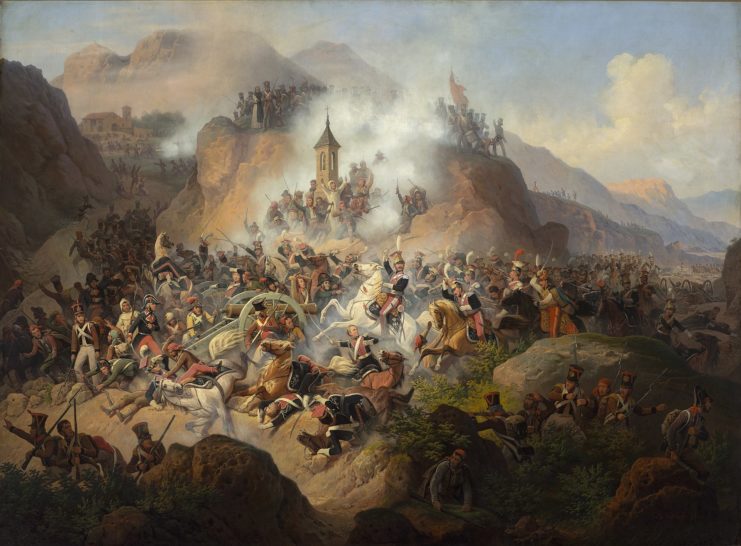
One of the most famous examples of the scorched earth policy occurred during the American Civil War. Close to victory toward the end of 1864, Union Gen. William Tecumseh Sherman used such tactics to break the Confederacy’s will. Beginning in Atlanta on November 15, he and his soldiers spent a month burning down everything in sight, during an event known as the March to the Sea.
The only towns spared were Charleston, South Carolina and Savannah, Georgia.
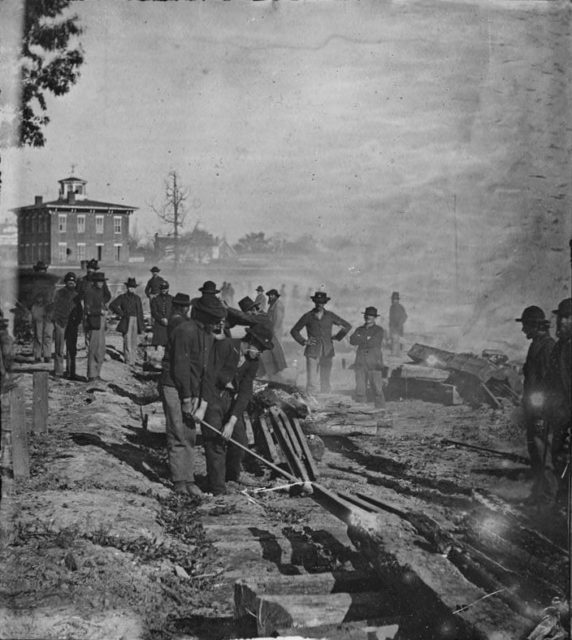
Sherman estimated his campaign cost the South $100 million. He also made refugees of those living in the areas his men decimated. These individuals were given plots of land to replace their damaged properties. Sherman has long been reviled in the South, but his actions helped to break the Confederacy and win the war for the Union forces.
Scorched earth tactics during the World Wars
The use of scorched earth tactics primarily occurred on the Eastern Front during World War I, but they were also used on the Western Front. In the east, the Imperial Russian Army used them to create a destruction zone during their retreat from the Imperial German Army in 1915, destroying homes, railways and crops. To the west, the Germans made use of the strategy to shorten the line between the Somme and the Hindenburg Line.
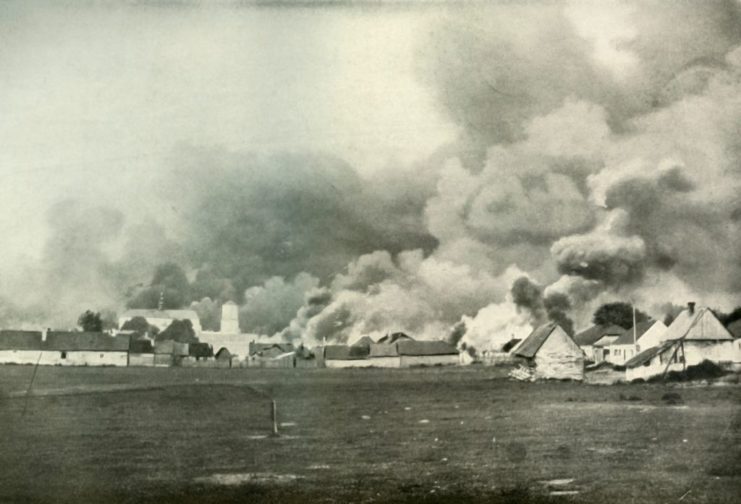
While used in the Greco-Turkish and Second Sino-Japanese wars during the interwar period, the next major use of the scorched earth policy was in the Second World War. It first saw use during the Winter War, with Finnish soldiers using it to destroy the shelters and food being used by the Soviet forces. However, the tables turned in 1944 during the German retreat from Finland, with the Germans destroying large swaths of land in the northern part of the country.
The Germans also made use of scorched earth tactics in Norway in 1944.
Vietnam and the Persian Gulf
Scorched earth tactics during the Vietnam War are typically attributed to the use of Agent Orange by the American forces. The chemical, known for being a particularly powerful herbicide, was used as part of Operation Ranch Hand to destroy crops and the jungle foliage the Viet Cong used to hide.
It was paired with Agent Blue, which was also used to destroy crops used by the Viet Cong – in particular, rice fields.
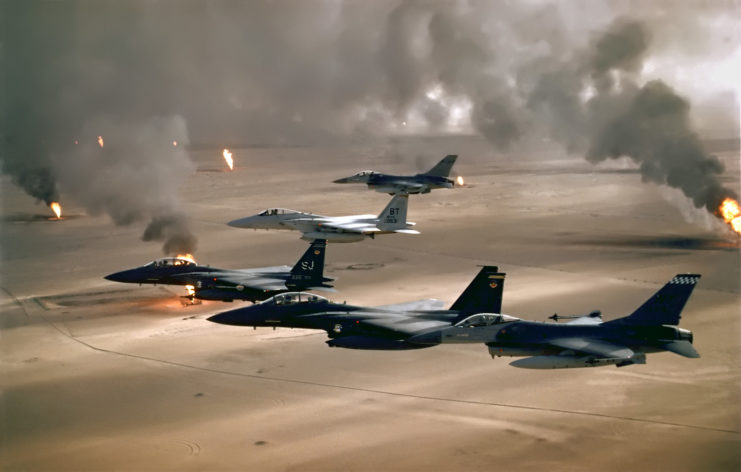
The Persian Gulf War also saw one of the most notable uses of the scorched earth strategy, with the Kuwaiti oil fires. During their retreat from Kuwait in 1991, the Iraqi forces set fire to between 605 and 732 oil wells in the country, to hinder the US-led coalition forces. The last of the fires was put out in November 1991, but not before the Kuwaiti economy lost $157.5 billion USD in oil and many soldiers suffered respiratory issues due to the poor air quality.
The 2022 Russian invasion of Ukraine
Scorched earth tactics have become much rarer in the 21st century, but examples of their use were seen in Darfur, Libya and Sri Lanka. Most recently, Russia has been accused of using them during its invasion of Ukraine, with White House National Security Adviser Jake Sullivan saying in early April 2022:
“I think it’s actually just consistent with the way that Russia has conducted this war from the beginning. We’ve seen scorched earth warfare already, we’ve seen atrocities and war crimes and mass killings and horrifying and shocking images from towns like Bucha, and the rocket attack on Kramatorsk.”
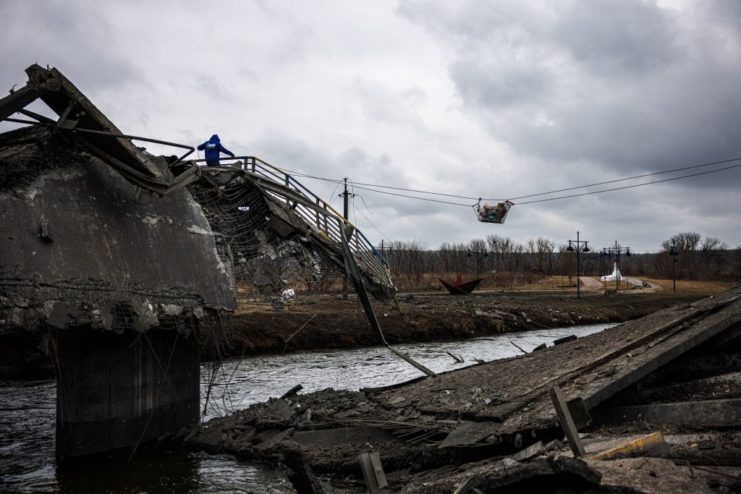
In particular, people have pointed toward the destruction of Ukrainian bridges by Russian forces, as a way to halt the transport of resources, supplies and troops. There has been widespread outrage and condemnation of Putin’s actions, with many countries levying sanctions against Russia and its oligarchs. Time will tell what the final result of the invasion will be.
